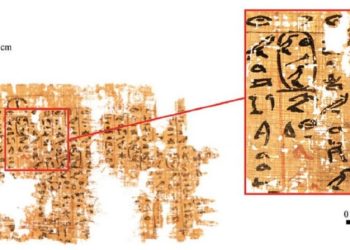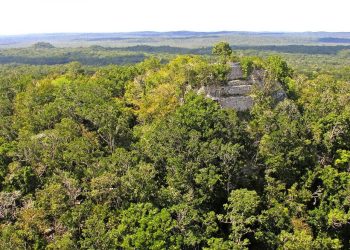For years, it was widely believed that violence levels in Viking Age societies across Scandinavia were relatively uniform. However, new research challenges this assumption, particularly highlighting stark differences between Norway and Denmark.
Recent findings led by a team of researchers, including David Jacobson, a sociologist at the University of South Florida, reveal that interpersonal violence—acts of violence not sanctioned by authorities—was significantly more prevalent in Norway compared to Denmark. This conclusion is drawn from the study of skeletal trauma and the prevalence of weaponry, which provides compelling evidence of Norway’s more violent social fabric. These findings were published in the Journal of Anthropological Archaeology, offering fresh insights into the distinct experiences of violence in Viking Age Norway and Denmark, and the role of social structures in shaping these patterns. The interdisciplinary research team, comprising experts from Norway and Germany, employed a combination of archaeological and sociological methods, studying skeletal remains and runestones—stone monuments inscribed with runes—to uncover the contrasting dynamics of violence, social hierarchies, and authority between the two regions.
In Norway, researchers found that 33% of the examined skeletons bore signs of healed injuries, indicating frequent violent encounters. Moreover, 37% of the skeletons exhibited evidence of fatal trauma, underscoring the deadly nature of these conflicts. The study also highlighted the significant presence of weapons, particularly swords, found alongside skeletons in Norwegian graves. Over 3,000 swords from the Late Iron Age and Viking periods were discovered in Norway, compared to just a few dozen in Denmark. This abundance of weaponry suggests that violence and the possession of weapons were deeply embedded in Norwegian Viking identity and social status. In contrast, the research reveals a different narrative for Denmark. Danish society during the Viking Age was more centralized, with well-defined social hierarchies and stronger central authority. Violence in Denmark was more controlled and often linked to official executions rather than personal disputes.
Danish skeletal remains displayed fewer injuries caused by weapons, but there was significant evidence of executions, such as decapitations. Only about 6% of Viking Age Danes appear to have died violently, with the majority of these deaths resulting from state-sanctioned executions. Additionally, fewer Danish graves contained weapons compared to Norwegian ones, reflecting a society where social order was maintained through political control rather than personal combat. This control is also evidenced by the construction of large earthworks and fortifications during King Harald Bluetooth’s reign in the 10th century, showcasing Denmark’s capacity for organized labor and its more structured social hierarchies. The study suggests that Denmark’s rigid social structure led to a reduction in overall violence, as the central authority regulated the use of force through official channels, such as executions. On the other hand, Norway’s more decentralized society experienced higher levels of peer-to-peer violence, as reflected in the greater prevalence of skeletal trauma.
These findings also support the broader theory that stronger centralized authority and well-defined social hierarchies can help reduce violence by consolidating the use of force within official institutions. David Jacobson notes, “The patterns we’ve uncovered suggest that Norway and Denmark were distinct societies during the Viking Age. This is particularly striking given the long-held belief that Viking Scandinavia was a relatively homogenous region.” This research adds to a growing body of work exploring how social structures influence violence in historical societies. Similar patterns have been observed in other regions, such as the Andes in South America and parts of North America, where less centralized societies also experienced higher levels of violence. Jacobson hopes the study will pave the way for a new explanatory model, particularly for periods where written records are scarce or nonexistent.











